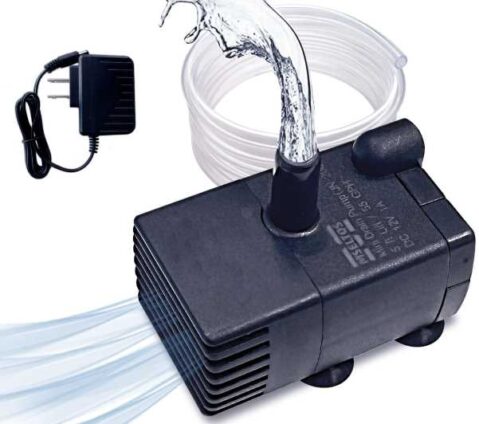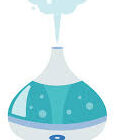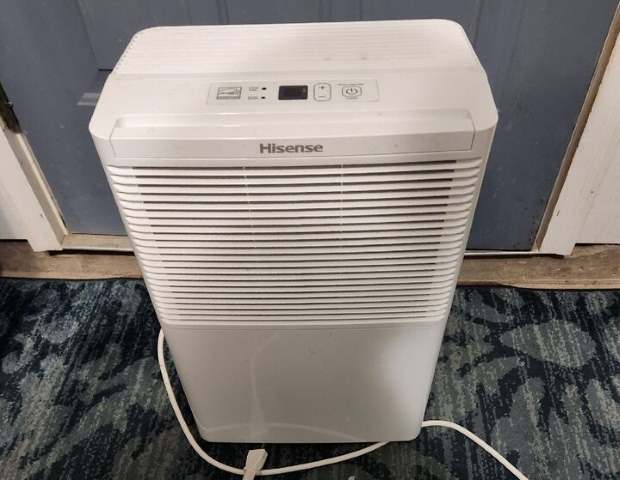Why Hisense Dehumidifier Pump is not Pumping Water, and Fixes
If you live in a high-humidity area, you are always at risk of developing a mold infestation at home.
And we know the warning signs of mold toxicity! Therefore, you want to do everything possible to lower your indoor humidity.
If you have high humidity inside your home, be ready to contend with indoor allergens!
This is where the Hisense dehumidifier steps in. With its powerful yet energy-efficient operation, it’s a game-changer for anyone seeking a drier, more comfortable living environment.
However, even the best appliances can experience occasional hiccups, and one such issue is a malfunctioning pump.
That is why today, many people online ask: Why is my Hisense dehumidifier pump not working? This happens due to the reasons below:
- The pump overheats
- The outlet tube is clogged
- The drain hose is kinked or clogged
- The pumping distance is too high/long
- The dehumidifier is too dirty and neglected
- The pump needs a reset
The above six are the most common culprits behind the failure of your dehumidifier pump. Keep reading to see tips to diagnose the problem and get your trusty dehumidifier humming happily again.
Why get a Hisense dehumidifier with a built-in pump?

When considering the differences between a dehumidifier with a pump and without, the one with a pump always wins.
Today, most Hisense dehumidifier models come with built-in pump. When functioning correctly, it silently whisks away the condensed water, eliminating the need for constant bucket emptying.
This automatic drainage system adds convenience and peace of mind to your dehumidifying experience, even when you are traveling.
In some cases, a dehumidifier with a drain hose in the basement is enough, but it will only drain water with gravity.
If you would like to pump the water it collects over a height, you should get a dehumidifier with a built-in pump.
Apart from not having to empty the dehumidifier bucket, the unit will work the same as the others. For instance, the built-in humidistat will read the humidity level. That way, the unit switches off as soon as the set humidity is reached.
It will then switch on automatically when the humidity rises above the set parameter.
The 6 main reasons for Hisense dehumidifier pump failure
Once you know the main causes of dehumidifier pump failure, you can take preventive measures. That way, the unit will never let you down at the most critical times:
1. The pump is overheating
Just like you, your Hisense dehumidifier pump needs to stay cool to perform at its best.
Overworking the dehumidifier in extremely humid conditions or when it has a clogged air filter can lead to overheating, causing the pump to shut down as a safety measure.
The pump works in almost the same way as the unit’s compressor. If it is overworked, for instance, when there is too much humidity, or when the dehumidifier is too small for the job, it will switch off. This prevents damage from overheating.
2. Clogged outlet tube
The way the pump works is… the water comes from the collection tank to the pump, where it is then pumped out through the drain hose.
But the tube leading from the collection tank to the pump can become clogged. Therefore, the pump will not work, since there is no water for it to pump out.
Imagine trying to drink through a straw packed with crumbs. That’s essentially the situation your pump faces if the outlet tube leading from the collection tank becomes clogged with debris or mineral buildup.
3. The pumping distance is too long
While your Hisense pump is a champion at lifting water, it has its limits. Pumping water beyond its recommended height can strain the motor and lead to malfunction.
Double-check the drain hose elevation and ensure it complies with the manufacturer’s specifications.
4. Pump reset is needed
Sometimes, all your pump needs is a little tech CPR. A power outage or surge can confuse its internal circuits, requiring a simple reset to get things back on track.
Consult your user manual for the specific reset procedure for your Hisense model.
5. Kinked in the drain hose
A kink in the drain hose is like a roadblock for water flow, preventing the pump from effectively discharging the collected water.
Check for any kinks or bends along the hose and straighten it out to ensure smooth water passage.
6. Keep the dehumidifier clean
Just like your car, your Hisense dehumidifier needs regular maintenance to stay in top shape.
A dirty air filter restricts airflow, impacting both dehumidification and pump performance. Regularly clean the filter according to the manufacturer’s instructions.
Dirt can make your dehumidifier blow cold air, instead of warm air. Also, dirt buildup can make the compressor and pump run hot, in which case the dehumidifier blows hot air.
Hisense dehumidifier pump failure fixes
Once you’ve identified the culprit behind the pump’s malfunction, follow these steps to get your Hisense dehumidifier back in tip-top shape:
Cool it down: If overheating is the issue, turn off the dehumidifier and let it cool down for a few hours. Check the air filter for clogs and clean it if necessary.
Clear the blockade: Disconnect the outlet tube and clean it thoroughly. Use warm water and a gentle cleaning agent to remove any debris.
Reduce the height: Ensure the drain hose is positioned correctly and within the recommended height limit.
Hit the reset button: Follow the user manual instructions to reset the pump.
Remove the kink: Straighten any kinks or bends in the drain hose to facilitate smooth water flow.
Ensure regular maintenance: Regularly clean the air filter and other components as per the manufacturer’s guidelines to prevent future pump issues.
Dehumidifiers can spread mold, especially when the air filter is too dirty or worn out.
Conclusion
A Hisense dehumidifier is a real workhorse, so I would recommend you get one as your main dehumidifier for the crawl space.
Do not take chances with high humidity because it can truly ruin your home. Also, remember that high humidity outside affects indoor humidity.
Therefore, always keep a dehumidifier on standby mode, even when you are traveling. Since you don’t need to empty the dehumidifier bucket, it can work without interference.


